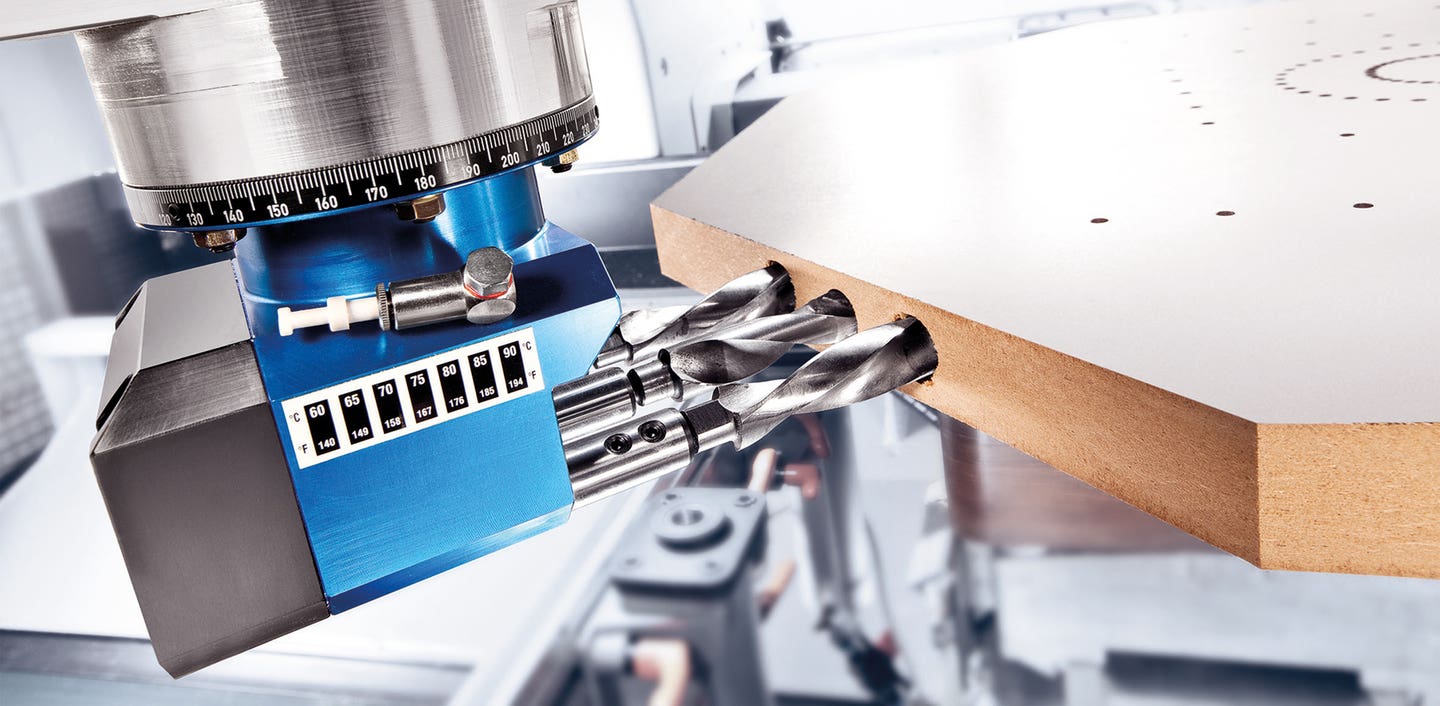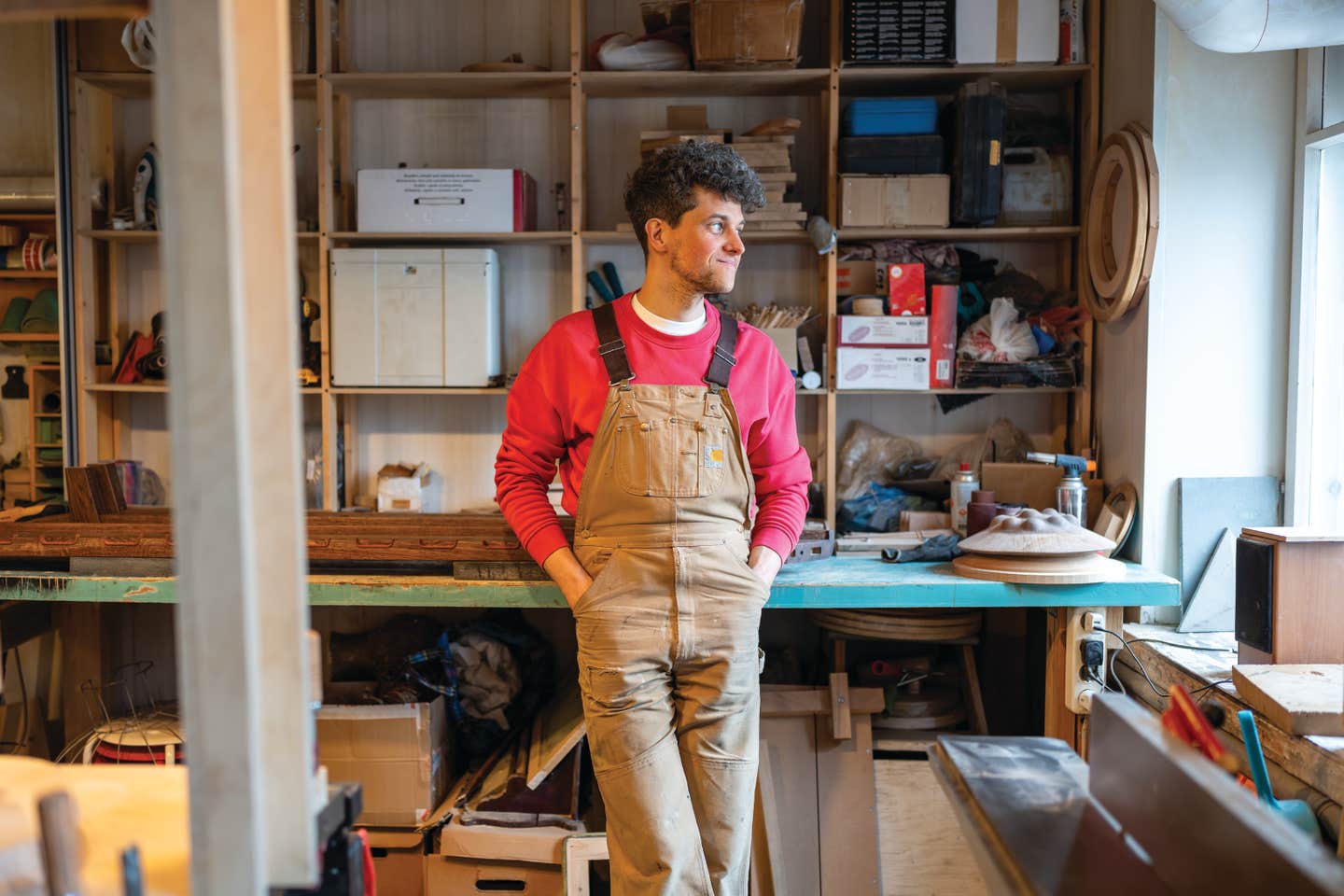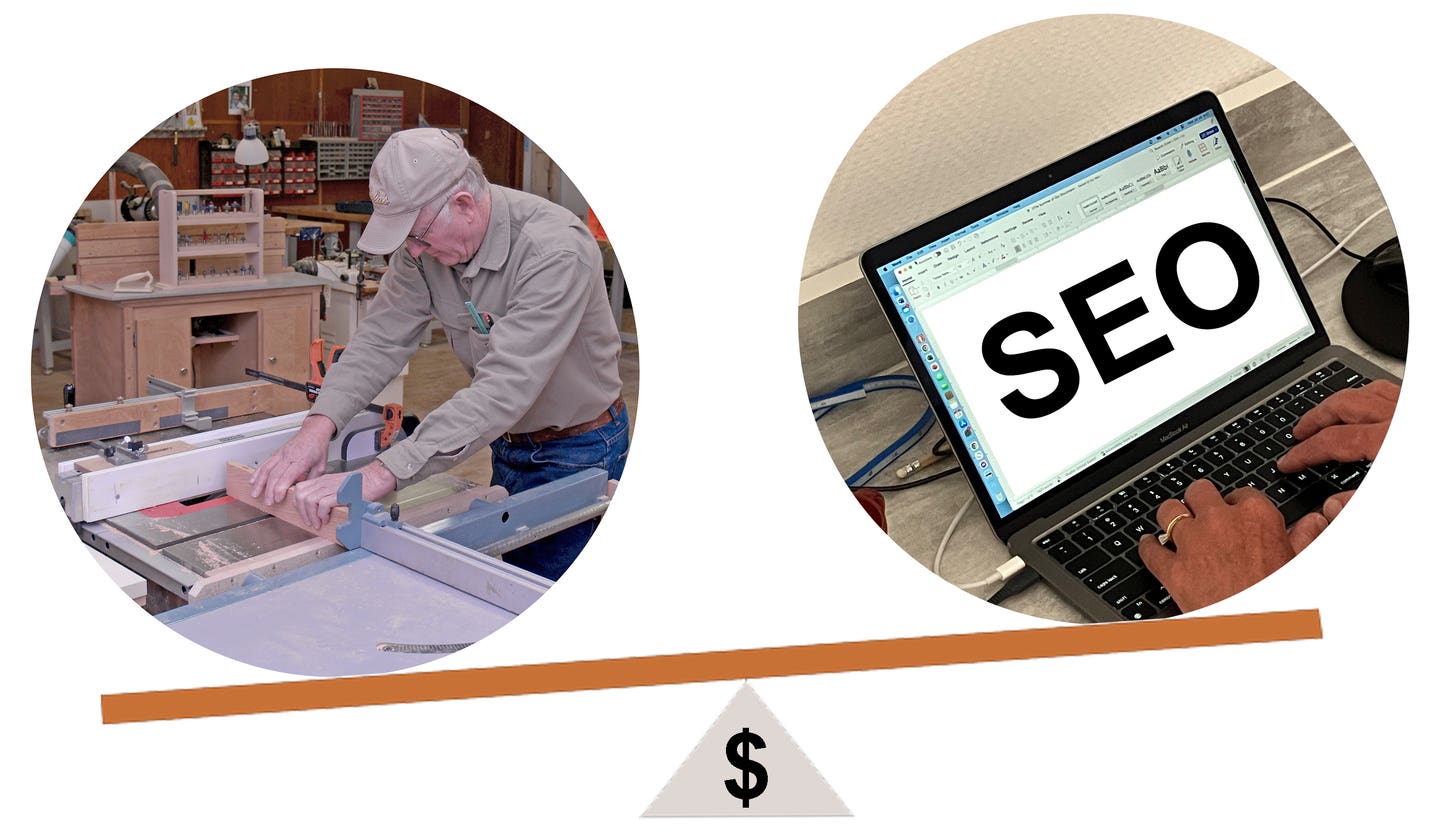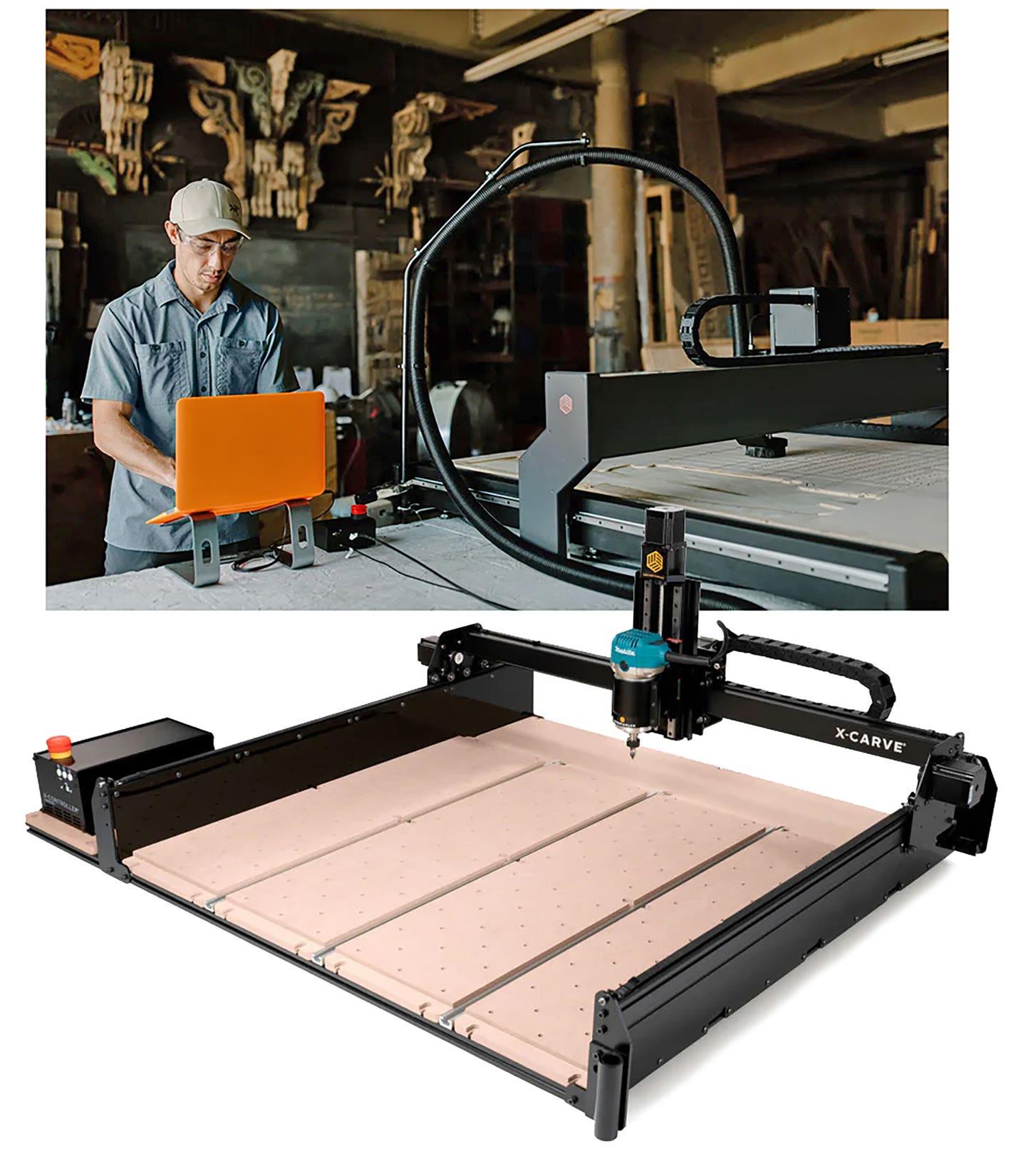True multi-taskers
Combination machines are space savers, but they can also handle the demands of a professional shop
Back in 1845, the concept of Manifest Destiny was developed with the idea that the U.S. would naturally expand across the entire continent. Today, most of us still practice a micro version of this in the woodshop. No matter how much space we have, we quickly manage to fill up every inch of it.
Stationary machines are the most ravenous gobblers of shop space because they don’t just occupy their own footprint but also require lots of square feet around them for loading and unloading, operation and maintenance. Half a dozen machines that each require ten times their own footprint can eat up a whole lot of shop space. And those expanded zones also tend to interfere with traffic through the shop.
One solution that has always been popular in other countries where space is at a premium is the multi-purpose machine. This is a piece of equipment that performs two or more functions, offers quick changeovers between tasks, and often uses the same set-ups (fence, depth of cut, etc.) to perform several different operations. Among the more familiar are machines that combine a jointer with a thickness planer, or a belt sander with a disc sander. And the quintessential American-made, multi-tasker is the Shopsmith, which offers hobbyists almost an entire woodshop in a footprint that is smaller than most kitchen tables. But those are light-duty machines that are not intended for all-day production. What if you need machines that can multi-task in a pro shop?
Multiple personalities
Europe has a long tradition of multi-purpose machinery, so it’s no surprise that one of the leaders in this field has Alpine roots. Felder Group (felder-group.com) has been building high quality woodworking machines since 1956 in Tirol, Austria. Its U.S. division currently offers four five-function machines that pride themselves on short changeover times. They have compact dimensions and can handle jointing, thickness planing, molding/shaping, sawing, and mortising. Some functions on some machines are optional, so it pays to ask what’s included. The introductory machine, the Hammer C3 31, includes a 12” planer while its larger sibling, the C3 41 expands that to 16”. The two Felder-branded models have similar capabilities: the CF 531 has a 12” jointing and planing capacity while the CF 741 can handle stock as wide as 16-1/8”. There are also variations of each machine available that offer different fences, table sizes, etc. The company offers in-house financing through Leasing Resources, and there are showrooms in Delaware, Texas, California and Colorado.
SCM Group North America (scmgroup.com) shares that European heritage as its parent company manufactures in Italy but has a global presence. SCM offers half a dozen Minimax brand multipurpose machines. The smallest, the C 26 G, performs sawing (10” blade), shaping, jointing and thicknessing. It has three single-phase motors, and the shaper has two speeds, 5000 and 7500 rpm. At the high end is the Cu 410 Es, which at first glance looks like a sliding table saw. It can accommodate the new Xylent spiral cutterhead with carbide inserts.
SCM also offers four Minimax jointer/planer combination machines, the FS 30c, 41c, 41e and 41es. They share a concentration on width rather than length. While most U.S. stand-alone jointers are 6” or 8” wide, these European machines are 12” and 16”. And the beds are significantly shorter because their primary design ethos is to be space-saving. Here, changeovers from planing to surfacing take about a minute. The company also offers two saw/shaper combination machines, the Minimax St 5es and the St 4e.
Grizzly Industrial (grizzly.com) offers two combination machines. The G0634X is a 12”, 5-hp thickness planer and jointer with a V-shaped helical cutterhead (as opposed to a spiral arrangement of the carbide inserts). The 48 indexable carbide inserts can be rotated up to three times for a new sharp edge. The quick-release fence tilts to 45 degrees and it has been end-mounted to save space, so nothing is protruding from the back of the machine. Conversion from jointer to planer is just a matter of removing the quick-release fence and flipping up the jointer tables. When a machine is described as helical, it means the knives or inserts are not aligned at 90 degrees across the cutterhead, but instead have the shape or form of a helix (like a spiral staircase).
The Grizzly G1037Z is a 13” planer/molder combination machine with a 1.5-hp motor, and a three-knife cutterhead. An undermount motor makes for convenient knife changes, and there are easily adjustable guides and dual molding fences. Grizzly also offers the Shop Fox W1812, a 2-hp, 7” planer/molder that has T-slots for easy guide rail adjustment, a one-piece enclosed stand, and a pedestal-mounted control switch with a variable-speed feed motor.
Shaping and sanding
Two sanders from Laguna Tools (lagunatools.com) offer a combination of drum and brush capabilities. The 13” SUPMX-91067 was developed with moldings in mind, and it can sand raw wood or between coats of stain or primer with its infinitely variable brush speed and conveyor feed rates. And the 19-38 open-ended combination machine has interchangeable drum and brush heads that let a woodworker drum sand and profile sand on the same machine.
Entry-level manual panel saws have been a real floorspace saver for smaller shops, and Safety Speed Mfg. (safetyspeed.com) has taken that technology another step by offering five models that can switch out the saw for a router. The panel saw and router combination lets a shop make a lot of parts in a very small footprint. The SR5 is a standard machine without any accessories or motor upgrades. The SR5U and SR5UA have been upgraded to a 3-hp worm drive saw and a heavy-duty router, along with upgraded aluminum material rollers.
JET (jettools.com) makes a 13” planer/molder (model JPM-13CS) as well as 8”, 10” and 12” planer/jointers.
Rikon Tools (rikontools.com) offers a 12” jointer/planer (model 25-210H) with four rows of insert cutters and cast-iron tables. Its unique, one-piece jointer tables easily lift out of the way for planer use, or to work on the cutterhead, which is home to 56 four-sided carbide inserts.
The 410 shaper/sander from Larick Machinery (larickmachinery.com) features digital readouts for speed and load, and optional floating heads that allow shaping and sanding of arched panels. The user-friendly design makes setup and profile changeovers quick and easy.
There are three industrial-grade shaper/sanders in the Voorwood catalog (voorwood.com). The A117 can accommodate five or more shaping/sanding stations, and it is capable of clockwise and counterclockwise rotations to eliminate rejects and produce the highest quality finished part. The smaller A115 can handle up to four shaping/sanding stations and it can be configured with either one or two units to shape outside edges and raised panels. When equipped with two, the first shaper is reversible and rotates with the feed direction and as the substrate passes, the station jumps in to make a short but full depth cut on its trailing edge to prevent wood grain tear-out. And the A11 shapes all components of cabinet doors, parts of drawers, and other wooden components and simultaneously sands the desired profiles, sizes the substrate to the desired finished dimensions, squares the substrate as all four sides are being processed, and processes straight edges as well as contoured shapes using a template system.
Martin Woodworking Machines (martin-usa.com) carries four Robland jointer/planers that range from the compact and budget-friendly NXSD 310 with a cutting width of 12”, through the 16” NXSD 410 and SD 410, and finally the 9.5-hp, 20” model SD 510.
Also from Martin, the Robland HX 310 PRO is a five-in-one combination machine that includes a table saw, spindle molder, thickness planer and jointer. There is also the option of adding a mortising machine.
This article was originally published in the January 2022 issue.







